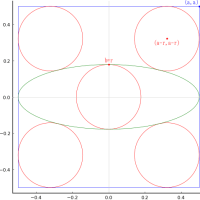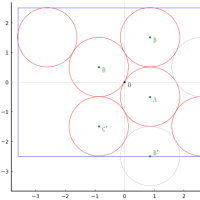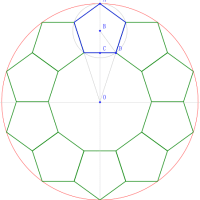配列の要素が true のもののインデックスを取り出す findall(), findall(f::Function, A)
julia> A = [true, false, false, true]
4-element Array{Bool,1}:
1
0
0
1
julia> findall(A)
2-element Array{Int64,1}:
1
4
julia> A = [true false; false true]
2×2 Array{Bool,2}:
1 0
0 1
julia> findall(A)
2-element Array{CartesianIndex{2},1}:
CartesianIndex(1, 1)
CartesianIndex(2, 2)
julia> findall(falses(3))
Int64[]
julia> x = [1, 3, 4]
3-element Array{Int64,1}:
1
3
4
julia> findall(isodd, x)
2-element Array{Int64,1}:
1
2
julia> A = [1 2 0; 3 4 0]
2×3 Array{Int64,2}:
1 2 0
3 4 0
julia> findall(isodd, A)
2-element Array{CartesianIndex{2},1}:
CartesianIndex(1, 1)
CartesianIndex(2, 1)
julia> findall(!iszero, A)
4-element Array{CartesianIndex{2},1}:
CartesianIndex(1, 1)
CartesianIndex(2, 1)
CartesianIndex(1, 2)
CartesianIndex(2, 2)
julia> d = Dict(:A => 10, :B => -1, :C => 0)
Dict{Symbol,Int64} with 3 entries:
:A => 10
:B => -1
:C => 0
julia> findall(x -> x >= 0, d)
2-element Array{Symbol,1}:
:A
:C
最初に見つかる true のインデックスを返す findfirst(A), findfirst(predicate::Funciton, A)
julia> A = [false, false, true, false]
4-element Array{Bool,1}:
0
0
1
0
julia> findfirst(A)
3
julia> findfirst(falses(3)) # returns nothing, but not printed in the REPL
julia> A = [false false; true false]
2×2 Array{Bool,2}:
0 0
1 0
julia> findfirst(A)
CartesianIndex(2, 1)
julia> A = [1, 4, 2, 2]
4-element Array{Int64,1}:
1
4
2
2
julia> findfirst(iseven, A)
2
julia> findfirst(x -> x>10, A) # returns nothing, but not printed in the REPL
julia> findfirst(isequal(4), A)
2
julia> A = [1 4; 2 2]
2×2 Array{Int64,2}:
1 4
2 2
julia> findfirst(iseven, A)
CartesianIndex(2, 1)
最後に見つかる true のインデックスを返す findlast(A), findlast(predicate::Function, A)
julia> A = [true, false, true, false]
4-element Array{Bool,1}:
1
0
1
0
julia> findlast(A)
3
julia> A = falses(2,2);
julia> findlast(A) # returns nothing, but not printed in the REPL
julia> A = [true false; true false]
2×2 Array{Bool,2}:
1 0
1 0
julia> findlast(A)
CartesianIndex(2, 1)
julia> A = [1, 2, 3, 4]
4-element Array{Int64,1}:
1
2
3
4
julia> findlast(isodd, A)
3
julia> findlast(x -> x > 5, A) # returns nothing, but not printed in the REPL
julia> A = [1 2; 3 4]
2×2 Array{Int64,2}:
1 2
3 4
julia> findlast(isodd, A)
CartesianIndex(2, 1)
i 以後の次の true インデックスを返す findnext(A, i),findnext(predicate::Function, A, i)
julia> A = [false, false, true, false]
4-element Array{Bool,1}:
0
0
1
0
julia> findnext(A, 1)
3
julia> findnext(A, 4) # returns nothing, but not printed in the REPL
julia> A = [false false; true false]
2×2 Array{Bool,2}:
0 0
1 0
julia> findnext(A, CartesianIndex(1, 1))
CartesianIndex(2, 1)
julia> A = [1, 4, 2, 2];
julia> findnext(isodd, A, 1)
1
julia> findnext(isodd, A, 2) # returns nothing, but not printed in the REPL
julia> A = [1 4; 2 2];
julia> findnext(isodd, A, CartesianIndex(1, 1))
CartesianIndex(1, 1)
i 以前の true インデックスを返す findprev(A, i),findprev(predicate::Function A, i)
julia> A = [false, false, true, true]
4-element Array{Bool,1}:
0
0
1
1
julia> findprev(A, 3)
3
julia> findprev(A, 1) # returns nothing, but not printed in the REPL
julia> A = [false false; true true]
2×2 Array{Bool,2}:
0 0
1 1
julia> findprev(A, CartesianIndex(2, 1))
CartesianIndex(2, 1)
julia> A = [4, 6, 1, 2]
4-element Array{Int64,1}:
4
6
1
2
julia> findprev(isodd, A, 1) # returns nothing, but not printed in the REPL
julia> findprev(isodd, A, 3)
3
julia> A = [4 6; 1 2]
2×2 Array{Int64,2}:
4 6
1 2
julia> findprev(isodd, A, CartesianIndex(1, 2))
CartesianIndex(2, 1)
対角要素を中心に右上と左下を入れ替える permutedims(m)
転置 transpose とは異なる。
julia> a = [1 2; 3 4];
julia> b = [5 6; 7 8];
julia> c = [9 10; 11 12];
julia> d = [13 14; 15 16];
julia> X = [[a] [b]; [c] [d]]
2×2 Array{Array{Int64,2},2}:
[1 2; 3 4] [5 6; 7 8]
[9 10; 11 12] [13 14; 15 16]
julia> permutedims(X)
2×2 Array{Array{Int64,2},2}:
[1 2; 3 4] [9 10; 11 12]
[5 6; 7 8] [13 14; 15 16]
julia> transpose(X)
2×2 Transpose{Transpose{Int64,Array{Int64,2}},Array{Array{Int64,2},2}}:
[1 3; 2 4] [9 11; 10 12]
[5 7; 6 8] [13 15; 14 16]
julia> permutedims([1, 2, 3, 4])
1×4 Array{Int64,2}:
1 2 3 4
julia> V = [[[1 2; 3 4]]; [[5 6; 7 8]]]
2-element Array{Array{Int64,2},1}:
[1 2; 3 4]
[5 6; 7 8]
julia> permutedims(V)
1×2 Array{Array{Int64,2},2}:
[1 2; 3 4] [5 6; 7 8]
julia> transpose(V)
1×2 Transpose{Transpose{Int64,Array{Int64,2}},Array{Array{Int64,2},1}}:
[1 3; 2 4] [5 7; 6 8]
コピーを伴わない permutedims PermuteDimsArray(A, perm) -> B
julia> A = rand(3,5,4);
julia> B = PermutedDimsArray(A, (3,1,2));
julia> size(B)
(4, 3, 5)
julia> B[3,1,2] == A[1,2,3]
true
次元属性が一致するかどうか promote_shape(s1, s2)
julia> a = fill(1, (3,4,1,1,1));
julia> b = fill(1, (3,4));
julia> promote_shape(a,b)
(Base.OneTo(3), Base.OneTo(4), Base.OneTo(1), Base.OneTo(1), Base.OneTo(1))
julia> promote_shape((2,3,1,4), (2, 3, 1, 4, 1))
(2, 3, 1, 4, 1)




























※コメント投稿者のブログIDはブログ作成者のみに通知されます